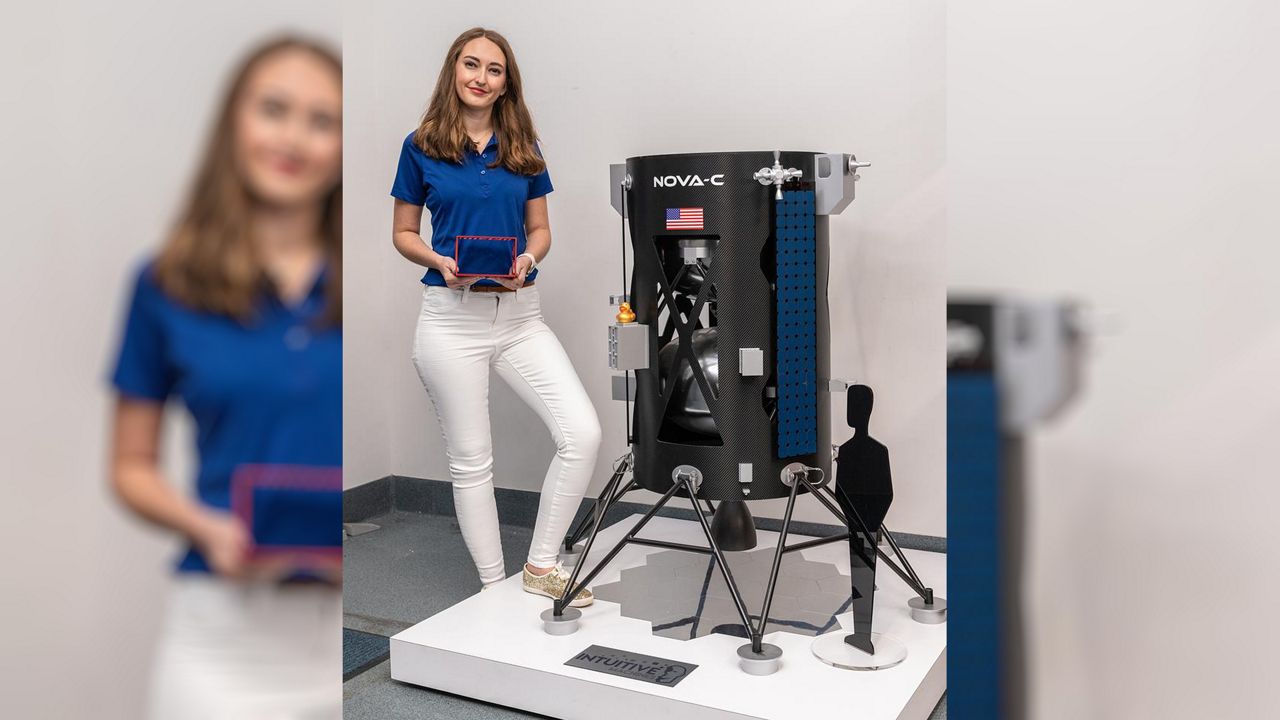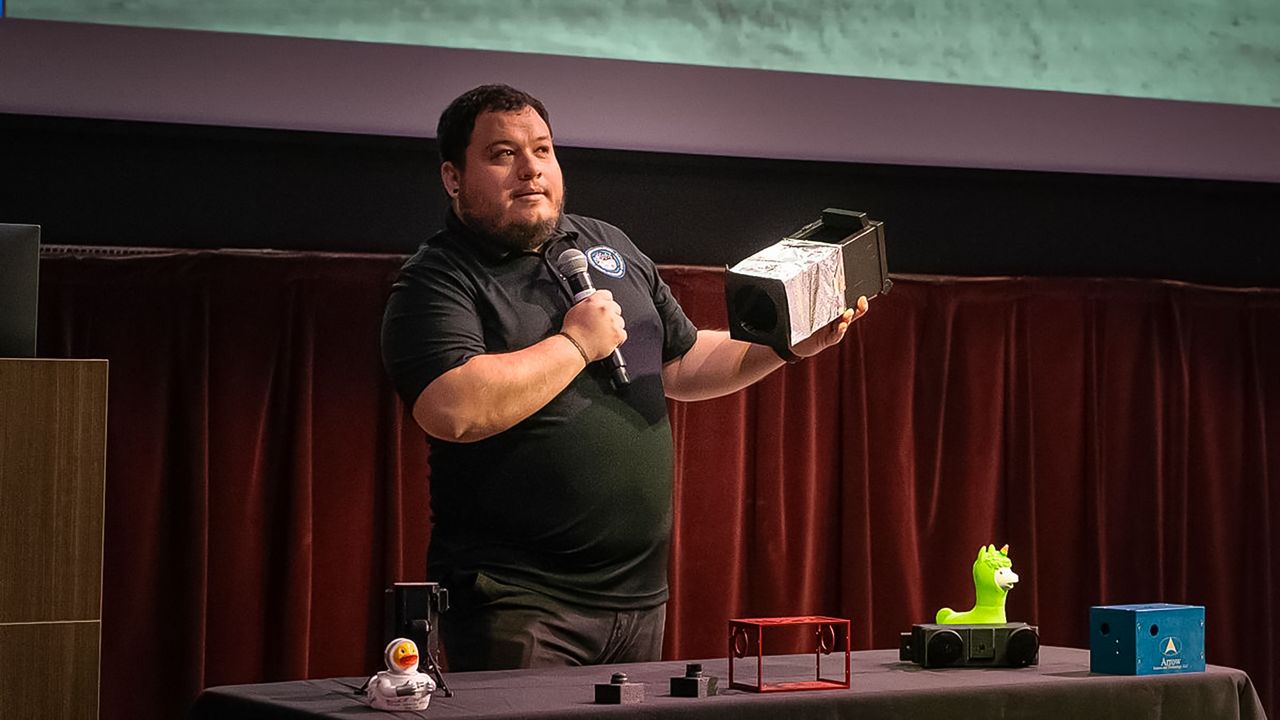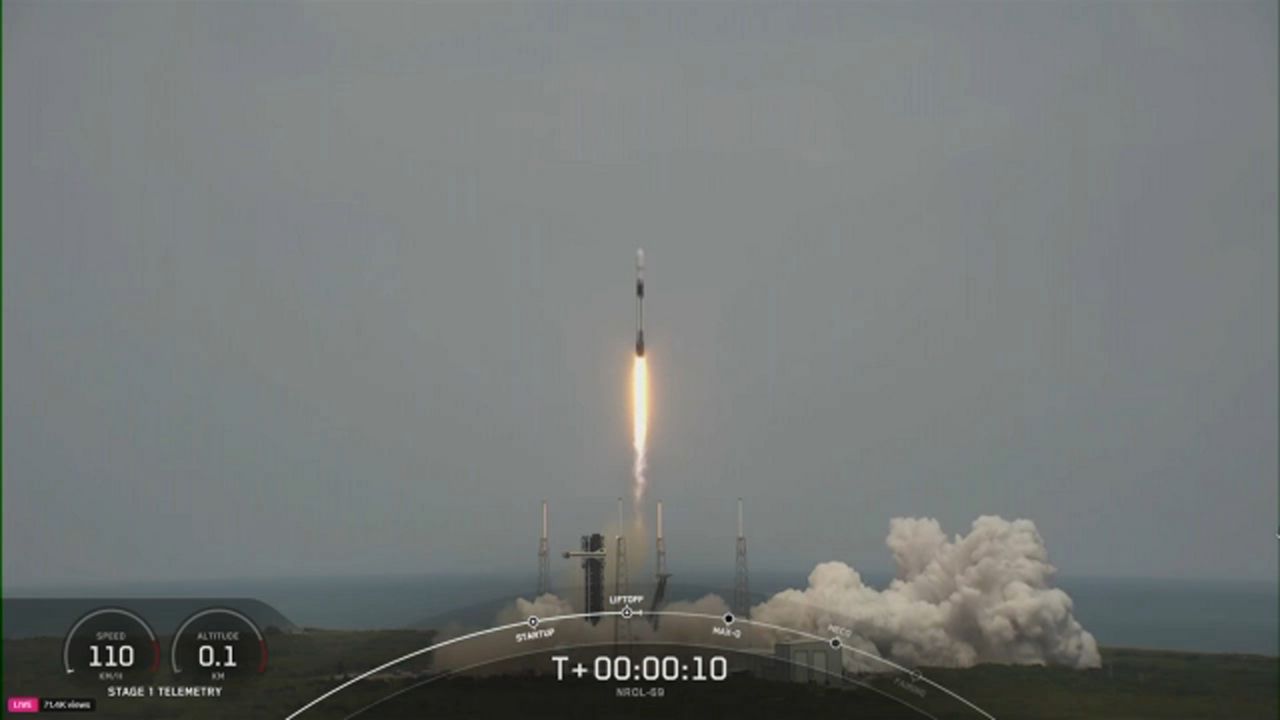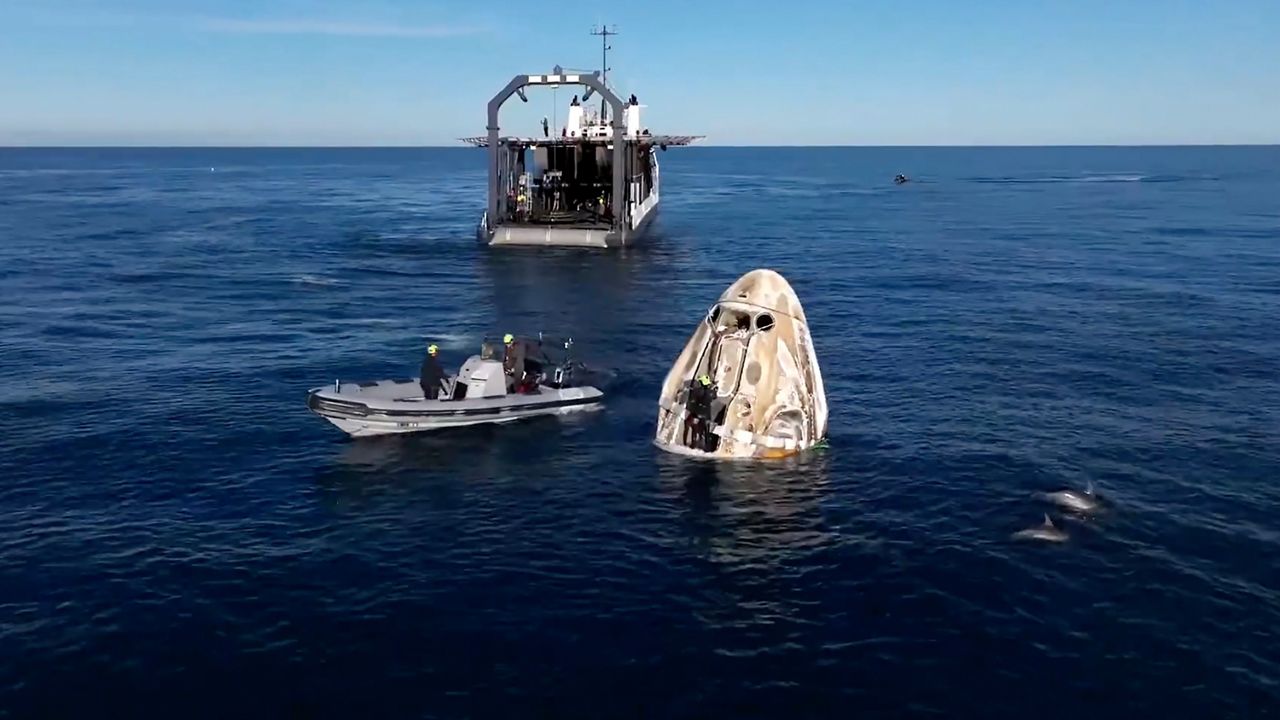VOLUSIA COUNTY, Fla. — As the world awaits for the Intuitive Machines’ Nova-C lunar lander Odysseus to land on the moon’s surface, the first images of this possible historical event will be captured by Embry-Riddle Aeronautical University’s EagleCam.
What You Need To Know
- The EagleCam will take the first photos of the IM-1 landing
The entire IM-1 mission from Intuitive Machines has several firsts, if all goes as scheduled. From being the first time a private company landing a spacecraft on the moon to the first time a university — anywhere in the world — has a project land on the lunar surface.
The Daytona Beach, Fla.-university’s EagleCam team took the time to answer some of Spectrum News’ questions about just how the CubeSat camera, nicknamed “Odie,” will operate for the IM-1 mission.
Q: How does it feel that the EagleCam will be the first object to record a spacecraft landing on the moon from a third-person perspective?
A: Dr. Troy Henderson, associate professor of aerospace engineering at the university and director of the EagleCam project: I’m extremely proud of this team of students. They took what they had learned in the classroom, learned a lot of new skills in the lab, and built a functional system that will be on the moon … accomplishing a series of firsts, including what may be one of the best pictures ever — a third-person view of a landing.
A: Taylor Yow, an aerospace engineering grad student at the university and EagleCam project manager: Even after working on EagleCam for four years, it still seems surreal that EagleCam will be the first object to record a third person point of view of a spacecraft landing on the moon. Our team put blood, sweat, and tears into this project and now we are all getting more excited the closer it gets to the moon. Students rarely, if ever, get to claim major firsts in this industry, so the fact that this first will go to a team of students makes it even sweeter.

Q: Please explain how this will happen and what type of imagery can we expect?
A: Yow: EagleCam will be spring ejected from the Nova-C class lander Odysseus about 30 meters above the lunar surface during the final descent. It will take three images a second from each of its three cameras (a total of nine images a second), capturing its six-second freefall to the surface and Odysseus’ descent and soft landing. About an hour after landing, our team will receive the five images of our choosing. During descent, Dr. Henderson and I will be timing events in landing sequence to match to image numbers to choose the first five images we bring back to Earth. Once we have those images, I will post them directly to @eraueaglecam on Instagram. Shortly after that, they will also be available on @spacetechnologieslab on Instagram and @SpaceTechLab on X (formerly Twitter).
A: Daniel Posada, an aerospace engineering doctoral candidate and EagleCam team lead: As Odie approaches the lunar surface, at about 30 meters the CubeSat camera system will deploy from the lander. As we are moving, we are constantly taking three different sets of images per second to grab the best shot as it touches down on the lunar surface. EagleCam has three cameras with a wide field-of-view that allows us to capture the lander from any camera, in case EagleCam rolls when it lands. We will have more than 1,300 images from the lander and lunar landscapes, and other data products at the end of the mission which lasts about 30 minutes. Then, soon after Odie lands and landing procedures are over, we will get the first images. We will choose the best one, do some color correction, and release it through our social media on Instagram @eraueaglecam and @spacetechnologieslab. We hope to share this picture as soon as possible with everyone.
Q: A lot of people are interested that the EagleCam will be the first to use Wi-Fi on the lunar surface. How exactly will that happen?:
A: Henderson: The EagleCam team developed custom Wi-Fi antennas for this demonstration. The Wi-Fi provides short range communications to collect the data from the deployed EagleCam to an on-board computer, where the data waits for transmission to Earth.
A: Posada: To get the images, we have a total of four antennas to transmit and receive. Two of the antennas are in the lander connected to a secondary computer we put on the CubeSat deployer. The other two antennas are in the CubeSat and we acquire connection before being deployed. We the start transmitting images in real-time to our secondary computer as a precaution in case we hit a hard rock in the landing and break on impact.

Q: The EagleCam is already doing some impressive firsts. What other mission objectives does it have?:
A: Henderson: We have several science objectives as well. One is to capture the dust plume wave front from a third-person view. The SCALPSS payload is looking under the lander at the crater caused by the engine, but EagleCam will be able to look from about 10 meters away and see the cloud formation. Another objective is to tie together images and data from the inertial measurement unit to recreate a high-resolution local map of the lunar surface near the landing site.
Editor’s note: Stereo Cameras for Lunar Plume-Surface Studies (SCALPSS) will record video and images of the plume of dust that will be created as the lunar lander lands on the moon’s surface.
A: Yow: Aside from being the first to capture third person point of view photograph of a landing on the lunar surface, we will be the first payload entirely student designed and built to land on the lunar surface, the first use of Wi-Fi on the moon, and EagleCam will perform the first in-space test of the electrodynamic dust shield (EDS). The EDS system was created by SwampWorks at Kennedy Space Center and electrically repels dust from a specially designed piece of glass. It has been in development since the Apollo program, and this will be the first time it will be used in space.
Q: What is the next mission for (another) EagleCam to be a part of?
A: Yow: The next mission for the EagleCam team and the Space Technologies Lab is called LLAMAS (Literally Looking At More Astronauts in Space). LLAMAS will be flying this summer as part of the Polaris Dawn mission. With LLAMAS, we plan to record video of the first commercial spacewalk stereoscopically, so that we can make a virtual reality (VR) experience of it. It has been so exciting to work with SpaceX and the Polaris team to make this insanely cool idea a reality.









